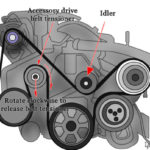Honda Hydrogen Business Summary
Neutral Alignment
Working toward the realization of a carbon-neutral society, Honda will not only continue electrifying its products but also take a proactive approach to increase the use of hydrogen as an energy carrier and strive to expand its hydrogen business. Honda recently held a press briefing on its hydrogen business initiatives. The presenters at the event included the following Honda executives:
Shinji Aoyama Director and Senior Managing Executive Officer,
Arata Ichinose, Operating Executive, Head of the Business Development Supervisory Unit.
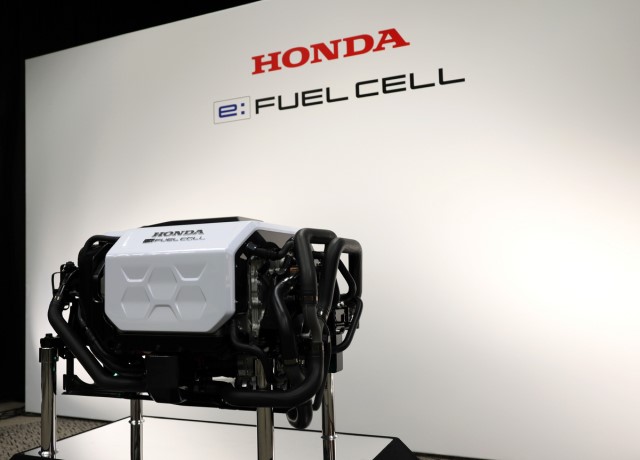
A summary of the briefing follows:
Honda initiatives to expand the use of hydrogen, a step forward toward a carbon-neutral society
Honda is striving to realize carbon neutrality for all products and corporate activities Honda is involved in by 2050. Aiming for “zero environmental impact” of not only its products but the entire product lifecycle including its corporate activities, Honda is focusing on the following areas as the “three-pillars” of its initiatives: “carbon neutrality,” “clean energy,” and “resource circulation.” In its initiatives, Honda positions hydrogen as one of the high-potential energy carriers, along with electricity.
The “hydrogen circulation cycle,” which starts with renewable energy, consists of three phases – “generate,” “store/transport” and “use.” To be more specific, with the use of water electrolysis technology, electricity derived from renewable energy sources can be converted into “green hydrogen*3,” making it less susceptible to fluctuations in power generation due to seasonality and weather conditions, and it becomes possible to transport the energy to where it is needed in the form of “green hydrogen” via appropriate methods such as transport by land, sea, and pipeline.
Honda will expand the applications of its fuel cell system, the core of Honda hydrogen technology, not only to Honda FCEVs but also to various internal and external applications, thereby serving to stimulate demand for hydrogen and facilitating the carbon neutrality of society through the “use” of hydrogen.
Further advancement of the fuel cell system, the core of Honda hydrogen technology
Honda was one of the first companies to focus on the potential of hydrogen toward the realization of a carbon-neutral society and has been conducting research and development of hydrogen technologies and FCEVs for more than 30 years. Since 2013, Honda has been working with GM on the joint development of the next-generation fuel cell system.
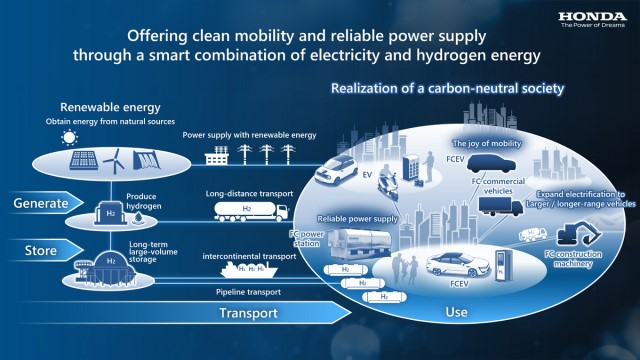
In 2024, in North America and Japan, Honda will launch a FCEV model equipped with the next-generation fuel cell system jointly developed with GM. While cost and durability are viewed as typical challenges that needed to be addressed to facilitate widespread use of fuel cell systems, this next-generation fuel cell system, which leverages the knowledge, know-how and economies of scale of both companies, will reduce the cost to one-third compared to the cost of the fuel cell system in the 2019 Honda Clarity Fuel Cell. This significant cost reduction was achieved by various measures including the adoption of innovative materials for electrodes, advancement of a cell sealing structure, simplification of the supporting equipment (“balance of plant”) and the improvement of productivity. Moreover, the durability of the system was doubled by the application of corrosion-resistant materials and controlled suppression of deterioration, and low temperature resistance was also increased significantly.
Building on these achievements through co-development with GM, looking ahead to the future around 2030, when fuel cell use is expected to begin to advance toward full-fledged popularization, Honda has begun fundamental research on future fuel cell technologies with targets to halve the cost and double the durability compared to the fuel cell system co-developed with GM. In doing so, Honda is striving to realize usability and total cost which will enable the fuel cell system to be on par with conventional diesel engines.
Honda is conducting advanced research and development of hydrogen technologies while envisioning use in outer space, another potential area where hydrogen technologies can be utilized. In addition to water and food, people need oxygen, as well as hydrogen for fuel and electricity for various activities supporting life in space. To enable sustainable space activities, it is necessary to reduce the need to resupply these resources from Earth as much as possible. One of the solutions to this challenge is to create a circulative renewable energy system, which combines a high differential pressure water electrolysis system that produces oxygen and hydrogen using solar energy to electrolyze water, and a fuel cell system that generates electricity and water from oxygen and hydrogen.
To create such a system, Honda conducted joint research and development with the Japan Aerospace Exploration Agency (JAXA) during the 2021 and 2022 fiscal years (period ended March 31, 2022). Moreover, in 2022, Honda signed a research and development contract*3 with JAXA regarding the “circulative renewable energy system” that is designed to supply electricity to maintain the functionality of the living space and various systems of lunar rovers. Based on this contract, Honda will be commissioned by JAXA to first conduct concept studies, then to develop a “breadboard model*4,” an early-stage prototype, by the end of the 2024 fiscal year (ending March 31, 2024).
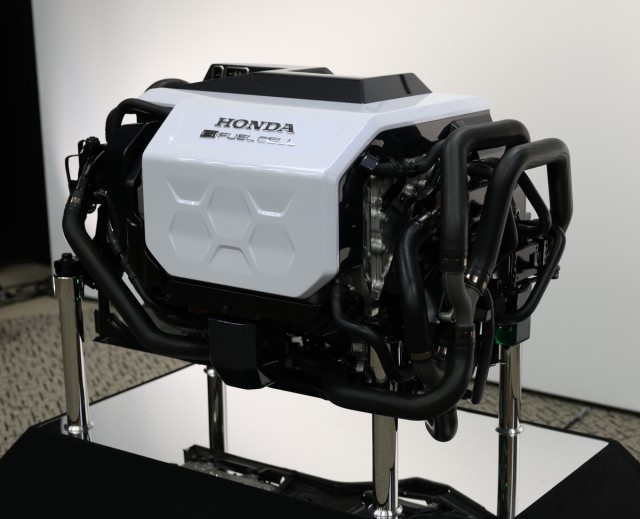
Starting external sales and expanding applications of the fuel cell system
In light of environmental trends in the world, Honda will continue expanding the application of its fuel cell systems, the core of Honda hydrogen technology, beyond its FCEVs in order to contribute to the realization of a carbon-neutral society. To this end, Honda will begin external sales of the next-generation fuel cell system modules in the mid-2020s. Honda is envisioning the initial sales level of 2,000 units per year and will strive to expand sales in stages, with goals to increase sales to 60,000 units in 2030, and to a few hundred thousand units per year by the second half of the 2030s.
Due to the unique characteristics of hydrogen, which can store and transport energy at high density and fill the tank quickly, the fuel-cell system is expected to be particularly effective as a power source for heavily used large-size mobility products and large-scale infrastructure as well as for mobility products that require quick refueling where it is difficult to be powered by batteries. Moreover, multiple units of the fuel cell system can be connected in parallel to achieve higher output. Based on these characteristics and strengths, Honda has identified four core domains for its fuel cell system applications for the early phase of its entry into hydrogen business: Honda FCEV models, commercial vehicles, stationary power stations and construction machinery and has begun developing hydrogen businesses targeting business-to-business (B2B) customers as well.
1) FCEVs
Honda is planning to begin sales of the all-new FCEV model in 2024 in North America and Japan. This model will be based on the CR-V introduced last year in North America and equipped with the next-generation fuel cell system. In addition to the advantages of FCEVs, which enables long-distance driving with short refueling time, this all-new FCEV model will feature a plug-in function that offers the convenience of EVs which can be recharged at home.
2) Commercial vehicles
In Japan, Honda is planning to start demonstration testing on public roads of a prototype fuel cell-powered heavy-duty truck being researched jointly with Isuzu Motors Limited, before the end of the upcoming fiscal year 2024 (ending March 31, 2024).
In Hubei Province, China, in January 2023, Honda began demonstration test driving of commercial trucks equipped with the next-generation fuel cell system in collaboration with Dongfeng Motor Group Co., Ltd.
3) Stationary power stations
In recent years, the power requirements of data centers have been growing rapidly due to the expansion of cloud computing and big data utilization, and the need for backup power sources has been increasing from the perspective of business continuity planning (BCP). To accommodate such needs, Honda will propose the application of its fuel cell systems in the area of power generation, starting from the application as a clean and quiet backup power source.
As the first step, a stationary fuel cell power station with an approximate capacity of 500kW, which reuses fuel cell systems from Honda Clarity Fuel Cell vehicles, was installed on the corporate campus of American Honda Motor Co., Inc. in California, U.S. The demonstration operation of the station as a backup power source for the data center will begin later this month. Subsequent to this testing, Honda will begin applying stationary fuel cell power station technologies to Honda factories and data centers around the world, through which Honda strives to reduce greenhouse gas emissions from its operation as well.
4) Construction machinery
Honda will take initiative to apply its fuel cell system first to excavators and wheel loaders, which account for a large segment of the construction machinery market, contributing to the realization of carbon neutrality for construction machinery.
Concerning hydrogen supply for construction machinery which is considered difficult to handle with conventional stationary hydrogen stations alone, Honda will work with construction industry associations and related parties to work toward resolving the challenge.
In order for more businesses to actively utilize fuel cell systems, it is important to solve issues such as reducing development investment and man-hours for installation, suppressing total cost and ensuring a stable and inexpensive supply of hydrogen. Honda will offer not only development support to adapt its fuel cell system to the customers’ products but also operational support such as after-sales maintenance and a stable supply of hydrogen, thereby making a one-stop contribution to the customers’ efforts toward carbon neutrality.
Initiatives toward the establishment of hydrogen ecosystems
To achieve widespread utilization of fuel cell systems, it is critical to establish hydrogen ecosystems, that include hydrogen supply. Honda has been supporting the expansion of hydrogen station networks in Japan by participating in the Japan Hydrogen Station Network Joint Company (Japan H2 Mobility/JHyM) and in North America by supporting hydrogen station businesses such as Shell and FirstElement Fuel.
From here forward, as a new area, Honda will take an active role in establishing hydrogen ecosystems which center around stationary power stations and start from where demand for hydrogen exists. Honda will also proactively participate in projects organized by national and local governments that utilize large volumes of imported hydrogen at ports and other locations. Through these initiatives, Honda will work to build partnerships with companies involved in this new area.
In Japan, working toward the establishment of a hydrogen ecosystem, together with Marubeni Corporation and Iwatani Corporation, Honda has begun discussing the prospects for hydrogen supply and the utilization of fuel cell commercial vehicles. In Europe, Honda is currently planning for demonstration testing of an energy ecosystem that combines renewable energy and hydrogen.
While continuing to strengthen collaboration and coordination with various companies in the hydrogen value chain, Honda will continue taking on new challenges in earnest to expand the utilization of hydrogen.
COMPANY DETAILS |
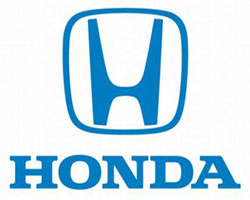
|
|
Company |
Honda Automotive |
|
Website |
|
|
Connect |
   
|
|
|
|
|
Contact |
|
|
Phone |
(800) 999-1009 |
|
Address |
1919 Torrance Blvd. |
|
Torrance, CA 90501 |
ABOUT Honda Automotive®
Founded in 1948 in Hamamatsu, Japan, Honda opened its first U.S. storefront in Los Angeles, CA, in 1959. What began as a nimble operation with eight industrious associates would quickly grow to astounding heights. For nearly four decades Honda has challenged to exceed government requirements – as the first automaker to meet the Clean Air Act standards in the 1970s, then demonstrating low-emissions vehicle technology that led the state of California to adopt new, more stringent emissions regulations.


